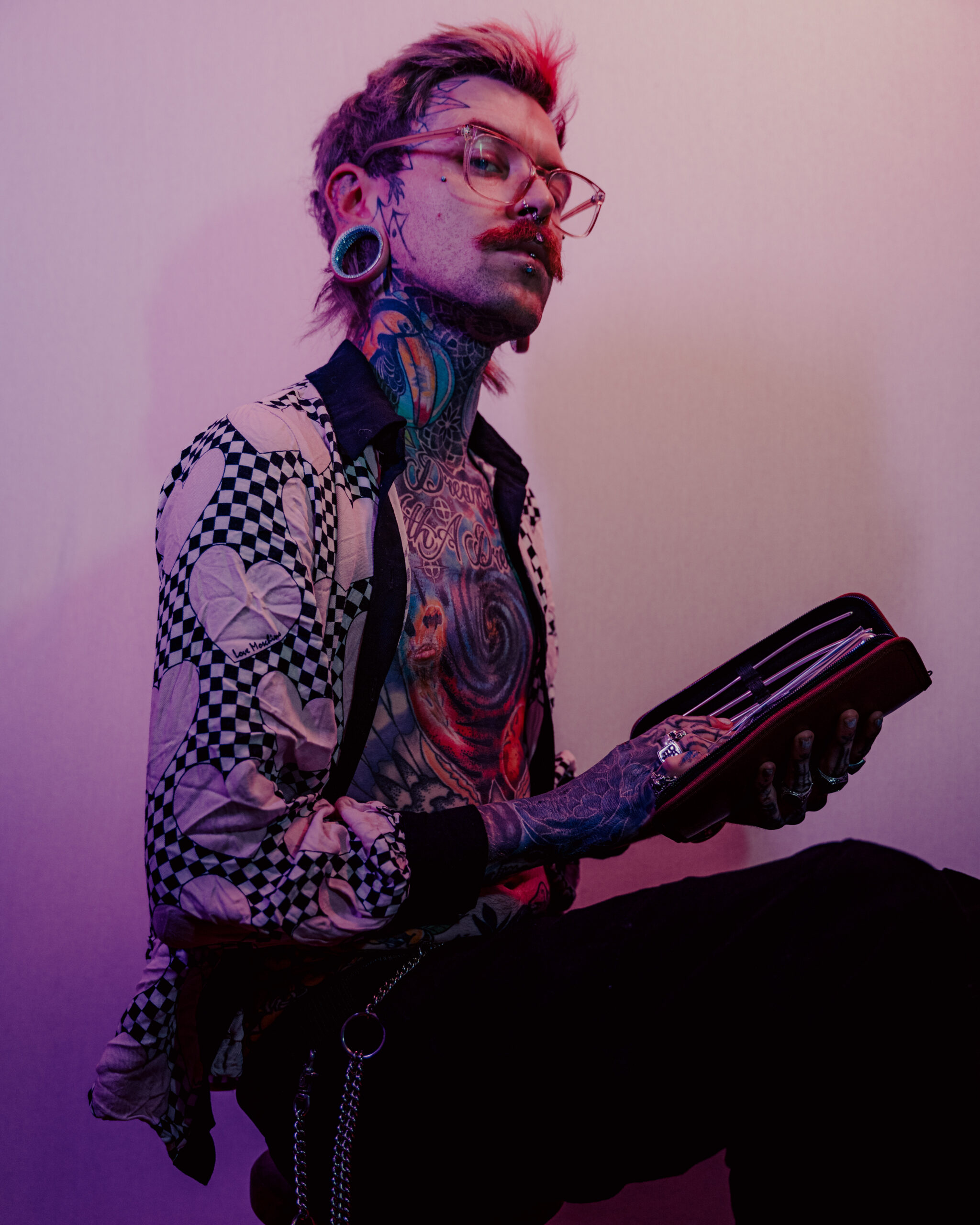Understanding Pansexuality
Pansexuality is a sexual orientation characterized by attraction to individuals regardless of their gender identity or expression. Understanding pansexuality goes beyond simply recognizing it as another term on the LGBTQ+ spectrum; it involves exploring the complexities of this identity, its historical context, and the experiences of pansexual individuals. This exploration aims to shed light on what pansexuality truly means, fostering greater understanding and acceptance within society.
Defining Pansexuality
Pansexuality is a sexual orientation characterized by attraction to people regardless of their gender identity or expression. Pansexual individuals are attracted to people across the entire spectrum of gender identities, including men, women, transgender individuals, non-binary people, and more. It’s important to note that pansexuality differs from bisexuality, which typically refers to attraction to two genders (often men and women). Pansexuality encompasses a broader range of gender identities and expressions.
Beyond the Binary: Challenging Gender Norms
Challenging traditional notions of sexuality, pansexuality embraces a fluid understanding of gender. It recognizes that gender is not confined to binary categories of male and female and acknowledges the diverse ways in which individuals express their gender identities. By extending attraction beyond the confines of these binaries, pansexuality promotes inclusivity and challenges societal norms that often limit our perceptions of love and desire.
For pansexual individuals, attraction is based on a person’s individual qualities rather than their assigned gender at birth. They see beyond societal labels and stereotypes to connect with people on a deeper level. This can lead to richer and more fulfilling relationships that celebrate individuality and embrace the full spectrum of human experience.
Spectrum of Attraction
Pansexuality is a sexual orientation characterized by attraction to individuals regardless of their gender identity or expression. Understanding pansexuality goes beyond simply recognizing it as another term on the LGBTQ+ spectrum; it involves exploring the complexities of this identity, its historical context, and the experiences of pansexual individuals.
Pansexuality is a sexual orientation characterized by attraction to people regardless of their gender identity or expression. Pansexual individuals are attracted to people across the entire spectrum of gender identities, including men, women, transgender individuals, non-binary people, and more. It’s important to note that pansexuality differs from bisexuality, which typically refers to attraction to two genders (often men and women). Pansexuality encompasses a broader range of gender identities and expressions.
Challenging traditional notions of sexuality, pansexuality embraces a fluid understanding of gender. It recognizes that gender is not confined to binary categories of male and female and acknowledges the diverse ways in which individuals express their gender identities. By extending attraction beyond the confines of these binaries, pansexuality promotes inclusivity and challenges societal norms that often limit our perceptions of love and desire.
For pansexual individuals, attraction is based on a person’s individual qualities rather than their assigned gender at birth. They see beyond societal labels and stereotypes to connect with people on a deeper level. This can lead to richer and more fulfilling relationships that celebrate individuality and embrace the full spectrum of human experience.
Exploring Experiences as a Pansexual Person
Exploring pansexuality means delving into a world where attraction transcends traditional boundaries of gender. It’s about understanding that love and desire can flourish beyond the confines of societal norms and embracing the vast spectrum of human identity.
Personal Journeys and Identities
Pansexuality is a sexual orientation characterized by attraction to individuals regardless of their gender identity or expression. Understanding pansexuality goes beyond simply recognizing it as another term on the LGBTQ+ spectrum; it involves exploring the complexities of this identity, its historical context, and the experiences of pansexual individuals.
Pansexuality is a sexual orientation characterized by attraction to people regardless of their gender identity or expression. Pansexual individuals are attracted to people across the entire spectrum of gender identities, including men, women, transgender individuals, non-binary people, and more. It’s important to note that pansexuality differs from bisexuality, which typically refers to attraction to two genders (often men and women). Pansexuality encompasses a broader range of gender identities and expressions.
Challenging traditional notions of sexuality, pansexuality embraces a fluid understanding of gender. It recognizes that gender is not confined to binary categories of male and female and acknowledges the diverse ways in which individuals express their gender identities. By extending attraction beyond the confines of these binaries, pansexuality promotes inclusivity and challenges societal norms that often limit our perceptions of love and desire.
For pansexual individuals, attraction is based on a person’s individual qualities rather than their assigned gender at birth. They see beyond societal labels and stereotypes to connect with people on a deeper level. This can lead to richer and more fulfilling relationships that celebrate individuality and embrace the full spectrum of human experience.
Exploring pansexuality means delving into a world where attraction transcends traditional boundaries of gender. It’s about understanding that love and desire can flourish beyond the confines of societal norms and embracing the vast spectrum of human identity.
Coming Out and Self-Acceptance
Pansexuality is a sexual orientation characterized by attraction to individuals regardless of their gender identity or expression. Understanding pansexuality goes beyond simply recognizing it as another term on the LGBTQ+ spectrum; it involves exploring the complexities of this identity, its historical context, and the experiences of pansexual individuals. This exploration aims to shed light on what pansexuality truly means, fostering greater understanding and acceptance within society.
Pansexuality is a sexual orientation characterized by attraction to people regardless of their gender identity or expression. Pansexual individuals are attracted to people across the entire spectrum of gender identities, including men, women, transgender individuals, non-binary people, and more. It’s important to note that pansexuality differs from bisexuality, which typically refers to attraction to two genders (often men and women). Pansexuality encompasses a broader range of gender identities and expressions.
Challenging traditional notions of sexuality, pansexuality embraces a fluid understanding of gender. It recognizes that gender is not confined to binary categories of male and female and acknowledges the diverse ways in which individuals express their gender identities. By extending attraction beyond the confines of these binaries, pansexuality promotes inclusivity and challenges societal norms that often limit our perceptions of love and desire.
For pansexual individuals, attraction is based on a person’s individual qualities rather than their assigned gender at birth. They see beyond societal labels and stereotypes to connect with people on a deeper level. This can lead to richer and more fulfilling relationships that celebrate individuality and embrace the full spectrum of human experience.
Exploring pansexuality means delving into a world where attraction transcends traditional boundaries of gender. It’s about understanding that love and desire can flourish beyond the confines of societal norms and embracing the vast spectrum of human identity.
- Educate yourself on pansexual history and culture. Understanding the historical context of pansexuality can provide valuable insights into its evolution and contemporary relevance.
- Engage with pansexual individuals and communities. Listening to firsthand experiences and perspectives from pansexual people can deepen your understanding and empathy.
- Challenge your own biases and assumptions about gender and sexuality. Be open to expanding your worldview and embracing the diversity of human experience.
Relationships and Dating
Pansexuality is a sexual orientation characterized by attraction to individuals regardless of their gender identity or expression. Understanding pansexuality goes beyond simply recognizing it as another term on the LGBTQ+ spectrum; it involves exploring the complexities of this identity, its historical context, and the experiences of pansexual individuals. This exploration aims to shed light on what pansexuality truly means, fostering greater understanding and acceptance within society.
Pansexuality is a sexual orientation characterized by attraction to people regardless of their gender identity or expression. Pansexual individuals are attracted to people across the entire spectrum of gender identities, including men, women, transgender individuals, non-binary people, and more. It’s important to note that pansexuality differs from bisexuality, which typically refers to attraction to two genders (often men and women). Pansexuality encompasses a broader range of gender identities and expressions.
Challenging traditional notions of sexuality, pansexuality embraces a fluid understanding of gender. It recognizes that gender is not confined to binary categories of male and female and acknowledges the diverse ways in which individuals express their gender identities. By extending attraction beyond the confines of these binaries, pansexuality promotes inclusivity and challenges societal norms that often limit our perceptions of love and desire.

For pansexual individuals, attraction is based on a person’s individual qualities rather than their assigned gender at birth. They see beyond societal labels and stereotypes to connect with people on a deeper level. This can lead to richer and more fulfilling relationships that celebrate individuality and embrace the full spectrum of human experience.
Exploring pansexuality means delving into a world where attraction transcends traditional boundaries of gender. It’s about understanding that love and desire can flourish beyond the confines of societal norms and embracing the vast spectrum of human identity.
Understanding pansexual people’s experiences requires empathy, respect, and a willingness to learn. It involves recognizing their individual identities and respecting their chosen terminology. By engaging with pansexual individuals, listening to their stories, and challenging our own biases, we can foster greater understanding and create a more inclusive society for all.

Navigating Societal Perceptions
Navigating societal perceptions can be complex, especially when dealing with concepts like sexuality that challenge traditional norms. Pansexuality, an orientation characterized by attraction to individuals regardless of gender identity or expression, often encounters misunderstanding and prejudice.
Misconceptions and Stereotypes
Navigating societal perceptions can be complex, especially when dealing with concepts like sexuality that challenge traditional norms. Pansexuality, an orientation characterized by attraction to individuals regardless of gender identity or expression, often encounters misunderstanding and prejudice.
- Educate yourself on pansexual history and culture. Understanding the historical context of pansexuality can provide valuable insights into its evolution and contemporary relevance.
- Engage with pansexual individuals and communities. Listening to firsthand experiences and perspectives from pansexual people can deepen your understanding and empathy.
- Challenge your own biases and assumptions about gender and sexuality. Be open to expanding your worldview and embracing the diversity of human experience.
Remember, fostering a more inclusive society requires ongoing effort, education, and a willingness to challenge our own preconceived notions.
Finding Support and Community
Navigating societal perceptions can be complex, especially when dealing with concepts like sexuality that challenge traditional norms. Pansexuality, an orientation characterized by attraction to individuals regardless of gender identity or expression, often encounters misunderstanding and prejudice.
Finding support and community is crucial for anyone who identifies as pansexual, especially in the face of societal challenges. Connecting with others who share similar experiences can provide validation, understanding, and a sense of belonging.
- Online communities and forums dedicated to LGBTQ+ individuals, including pansexual people, offer spaces to connect with others, share experiences, and access resources.
- Local LGBTQ+ centers and organizations often host events, support groups, and social gatherings that provide opportunities for connection and community building.
- Engaging with allies who are supportive of LGBTQ+ rights can also provide valuable emotional support and a sense of solidarity.
Remember, you are not alone. There are people who understand and support you. Building connections within the pansexual community and seeking out allies can create a network of love, acceptance, and empowerment.

Advocacy and Representation
Pansexuality is a sexual orientation characterized by attraction to individuals regardless of their gender identity or expression. Understanding pansexuality goes beyond simply recognizing it as another term on the LGBTQ+ spectrum; it involves exploring the complexities of this identity, its historical context, and the experiences of pansexual individuals.
This exploration aims to shed light on what pansexuality truly means, fostering greater understanding and acceptance within society.
Navigating societal perceptions can be complex, especially when dealing with concepts like sexuality that challenge traditional norms. Pansexuality, an orientation characterized by attraction to individuals regardless of gender identity or expression, often encounters misunderstanding and prejudice.
To promote a more inclusive society:
- Educate yourself on pansexual history and culture.
- Engage with pansexual individuals and communities.
- Challenge your own biases and assumptions about gender and sexuality.
Finding support and community is crucial for anyone who identifies as pansexual, especially in the face of societal challenges. Connecting with others who share similar experiences can provide validation, understanding, and a sense of belonging.
- Online communities and forums dedicated to LGBTQ+ individuals, including pansexual people, offer spaces to connect with others, share experiences, and access resources.
- Local LGBTQ+ centers and organizations often host events, support groups, and social gatherings that provide opportunities for connection and community building.
- Engaging with allies who are supportive of LGBTQ+ rights can also provide valuable emotional support and a sense of solidarity.
Remember, you are not alone. There are people who understand and support you. Building connections within the pansexual community and seeking out allies can create a network of love, acceptance, and empowerment.
Embracing Your Identity
Exploring pansexuality means opening your mind to a world where attraction transcends traditional boundaries. It’s about understanding that love and desire can flourish beyond the confines of societal norms and embracing the vast spectrum of human identity. It’s about recognizing that individuals should be loved and celebrated for who they truly are, regardless of their gender identity or expression.
Self-Love and Affirmation
Celebrating Diversity
Pansexuality is a sexual orientation characterized by attraction to individuals regardless of their gender identity or expression. Understanding pansexuality goes beyond simply recognizing it as another term on the LGBTQ+ spectrum; it involves exploring the complexities of this identity, its historical context, and the experiences of pansexual individuals. This exploration aims to shed light on what pansexuality truly means, fostering greater understanding and acceptance within society.
Pansexuality is a sexual orientation characterized by attraction to people regardless of their gender identity or expression. Pansexual individuals are attracted to people across the entire spectrum of gender identities, including men, women, transgender individuals, non-binary people, and more. It’s important to note that pansexuality differs from bisexuality, which typically refers to attraction to two genders (often men and women). Pansexuality encompasses a broader range of gender identities and expressions.
Challenging traditional notions of sexuality, pansexuality embraces a fluid understanding of gender. It recognizes that gender is not confined to binary categories of male and female and acknowledges the diverse ways in which individuals express their gender identities. By extending attraction beyond the confines of these binaries, pansexuality promotes inclusivity and challenges societal norms that often limit our perceptions of love and desire.
For pansexual individuals, attraction is based on a person’s individual qualities rather than their assigned gender at birth. They see beyond societal labels and stereotypes to connect with people on a deeper level. This can lead to richer and more fulfilling relationships that celebrate individuality and embrace the full spectrum of human experience.
Exploring pansexuality means delving into a world where attraction transcends traditional boundaries of gender. It’s about understanding that love and desire can flourish beyond the confines of societal norms and embracing the vast spectrum of human identity.
- Educate yourself on pansexual history and culture. Understanding the historical context of pansexuality can provide valuable insights into its evolution and contemporary relevance.
- Engage with pansexual individuals and communities. Listening to firsthand experiences and perspectives from pansexual people can deepen your understanding and empathy.
- Challenge your own biases and assumptions about gender and sexuality. Be open to expanding your worldview and embracing the diversity of human experience.
Creating Inclusive Spaces
Pansexuality is a beautiful and important part of the diverse spectrum of human experience. It’s about recognizing that love and attraction can flourish beyond traditional boundaries of gender. Embracing pansexuality means challenging societal norms, celebrating individuality, and creating inclusive spaces where everyone feels seen, heard, and accepted for who they truly are.
Here’s how we can all contribute to fostering a more inclusive world:
* **Education is Key:** Learning about pansexual history, culture, and the lived experiences of pansexual individuals is crucial to dismantling stereotypes and fostering understanding.
* **Listen and Learn from Pansexual People:** The best way to understand pansexuality is to listen directly to pansexual people. Engage with them respectfully, ask thoughtful questions, and be open to learning from their perspectives.
* **Challenge Biases:** We all have biases, but it’s important to recognize them and work to unlearn them. Question your assumptions about gender and sexuality, and be willing to expand your understanding.
* **Create Inclusive Spaces:** Make an effort to create welcoming and supportive environments for pansexual individuals in your communities, workplaces, and relationships. Use inclusive language, celebrate diversity, and stand up against discrimination.
Remember, creating a truly inclusive world requires ongoing commitment and action. Let’s work together to build a society where everyone feels loved, accepted, and empowered to be their authentic selves.
anal stretching toys
Alabama SigDelt
Tasha
- Why Do I Look Like A Chipmunk After Cheek Fillers? - November 13, 2025
- What Is The Best Non-Surgical Treatment For Jowls In The UK? - November 11, 2025
- What Are The Best CBD Gummies For Improving Mood And Relaxation? - November 10, 2025
